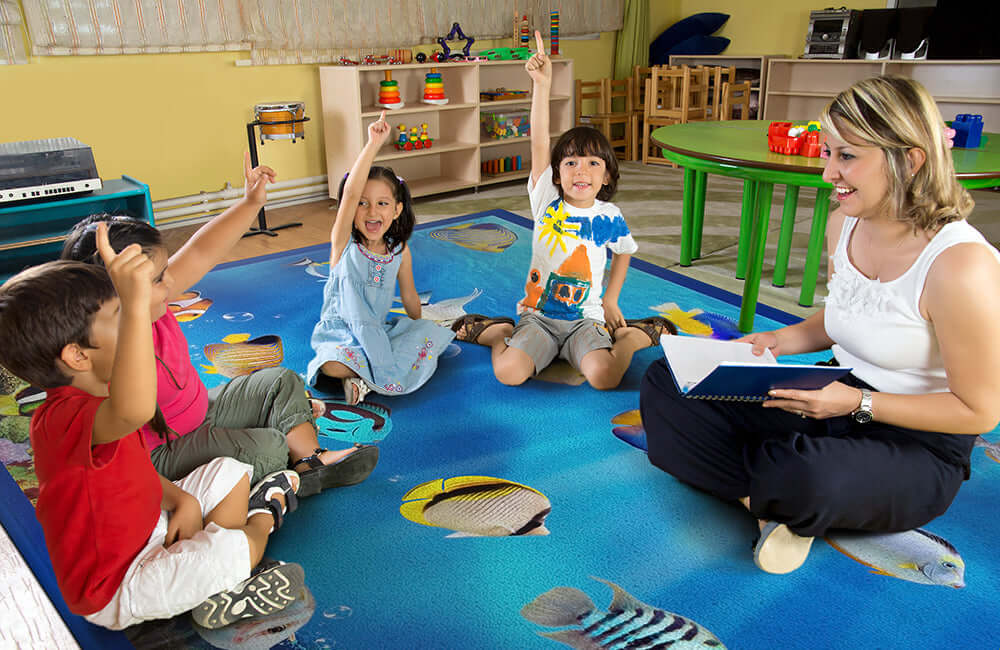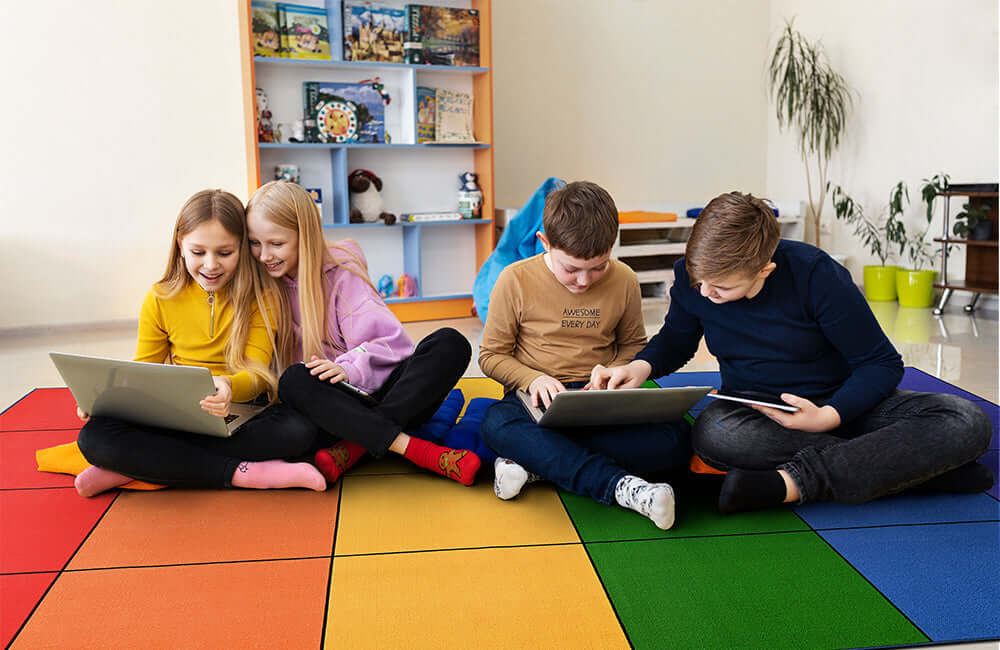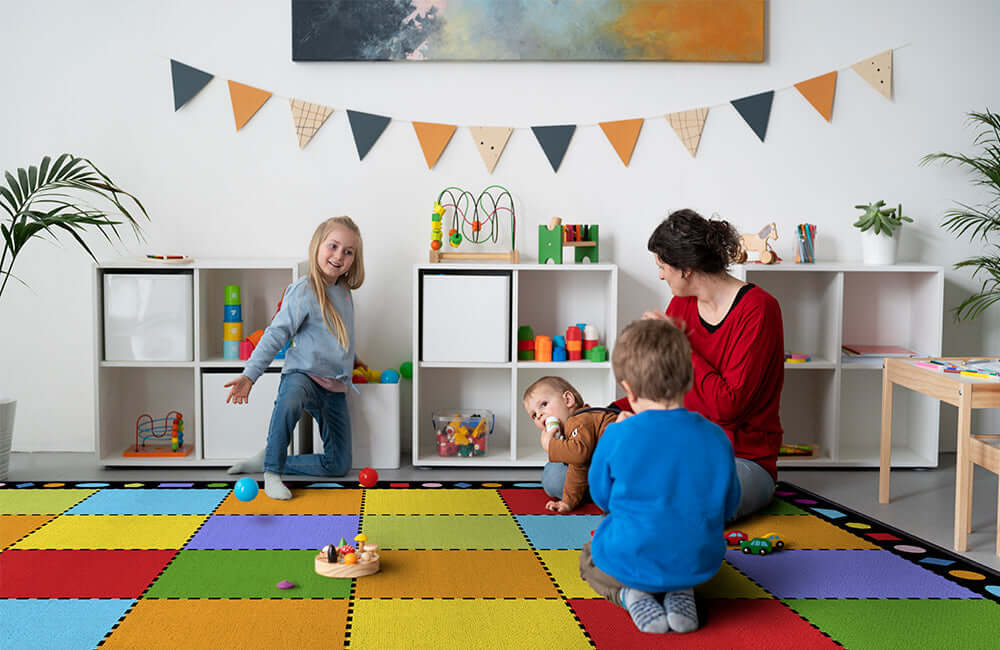In an era where children spend increasingly limited time outdoors, educators are seeking innovative ways to reconnect students with nature within the four walls of the classroom. Enter biophilic design—an approach that incorporates natural elements into built environments to satisfy our innate need to affiliate with nature. Among the most accessible and impactful tools in the biophilic classroom toolkit are nature-themed rugs.
These specialized floor coverings do far more than add visual interest; they serve as daily touchpoints with the natural world, creating subtle yet powerful connections between indoor learning spaces and the outdoor environments many children rarely experience firsthand. From forest scenes to underwater ecosystems, nature-themed rugs transform sterile classroom floors into immersive landscapes that spark curiosity, calm nervous systems, and create unique opportunities for educational engagement.
Biophilic Design in Education
The term "biophilia," coined by biologist E.O. Wilson, describes humans' inherent affinity for and connection to nature. Biophilic design translates this concept into architectural and interior design principles that incorporate natural elements, patterns, and experiences into built environments.
According to research published in the Journal of Environmental Psychology, exposure to nature—even simulated through design elements—can reduce stress, enhance cognitive function, and improve overall well-being. For students spending upwards of 1,000 hours annually in classrooms, these benefits are particularly significant.
As explained by Wikipedia's article on biophilic design, this approach encompasses direct experiences of nature (like plants), indirect references (like nature imagery), and spatial experiences that mimic natural environments. Nature-themed classroom rugs primarily fall into the second category, offering symbolic connections to the natural world through visual representation.
Benefits of Nature-Themed Rugs in Classrooms
Reduced Stress and Improved Focus
Studies from the Human Spaces report indicate that visual connections to nature can lower blood pressure and heart rates while improving concentration. Nature-themed rugs provide constant, passive exposure to natural imagery, potentially helping students maintain calmer states more conducive to learning.
Enhanced Imaginative Play
A forest floor rug or ocean scene creates a stage for imaginative play scenarios, encouraging students to develop stories and interactions connected to natural environments they may rarely visit. This type of play strengthens narrative thinking skills and environmental awareness simultaneously.
Curriculum Integration Opportunities
From habitat studies on a woodland rug to counting activities using ocean creatures, nature-themed rugs create organic opportunities for curriculum connections across subjects. The physical presence of these images allows for kinesthetic learning experiences where students can physically interact with representations of natural elements.
Sensory Benefits
Many nature-themed rugs incorporate varied textures and pile heights to represent different natural features—a subtle sensory element that benefits all children but is particularly valuable for sensory-seeking students and those with special needs.
Environmental Awareness
Daily exposure to representations of natural ecosystems builds familiarity and connection with environments students might not regularly experience, potentially fostering environmental stewardship from an early age.
Popular Nature-Themed Rug Designs
Woodland and Forest Scenes
Forest floor rugs featuring trees, woodland creatures, and seasonal elements create immersive nature experiences. These designs often incorporate educational elements like tree identification, animal tracks, or forest layers for science curriculum connections.
Ocean and Underwater Ecosystems
Coral reef scenes and ocean floor landscapes introduce diverse marine life, often with educational labels and realistic depictions. These rugs work particularly well for units on water ecosystems and marine conservation.
Landscape Maps
Topographical rugs showing mountains, rivers, and valleys introduce geographical concepts through tactile experience. Some designs include labeled features that support geography curriculum directly.
Weather and Sky Elements
Rugs featuring cloud formations, weather patterns, or day/night sky scenes connect students to atmospheric phenomena and celestial observations, supporting earth science curriculum.
Garden and Plant Life
For younger students, garden-themed rugs with labeled plants, insects, and growth cycles support early science concepts and connect to school garden initiatives.
Season-Specific Designs
Rugs depicting seasonal changes help students understand natural cycles and environmental transitions, particularly valuable in urban settings where seasonal changes may be less obvious.
Implementation Strategies
Creating Themed Learning Stations
Position nature-themed rugs to define specific learning centers within the classroom. A pond-life rug might designate the science area, while a mountain landscape rug could define the reading corner, creating thematic coherence between the space and its intended activities.
Rotation Systems for Varied Exposure
For budget-conscious schools, implementing a rug rotation system between classrooms allows students to experience different nature themes throughout the year. This approach also extends the life of each rug by distributing wear patterns.
Student Involvement in Selection
When possible, involve students in selecting nature themes that interest them. This participation creates investment in the classroom environment and opportunities to discuss preferred natural settings and why they appeal to different individuals.
Conscious Placement for Maximum Benefit
Consider natural light when positioning nature-themed rugs. Placing them near windows where dappled light might animate the design throughout the day enhances the biophilic effect by adding the natural element of changing light.
As noted by educational environment expert Lillian Wong on her education design blog, "The most effective biophilic elements are those positioned where students will have daily, meaningful interactions with them—not merely as decorations but as functional parts of their learning experience."
Complementary Elements for a Complete Biophilic Classroom
Nature-themed rugs work best as part of a comprehensive biophilic approach. Consider pairing them with:
Living Elements
Live plants selected for air-purifying qualities and low maintenance requirements add genuine natural elements that complement the imagery on nature-themed rugs. According to Inhabitat's guide to classroom plants, species like spider plants and peace lilies thrive in classroom conditions while improving air quality.
Natural Materials
Incorporate baskets, wooden storage units, and stone elements that bring varied natural textures into the space, reinforcing the biophilic approach beyond visual representations.
Nature Sound Integration
Consider occasional use of nature sounds—rainfall, forest ambiance, or ocean waves—during independent work times to create a multi-sensory biophilic experience.
Natural Light Optimization
Maximize available natural light and supplement with full-spectrum lighting that mimics daylight qualities, enhancing the visual impact of nature-themed rugs and supporting students' circadian rhythms.
Case Studies: Success Stories from Educators
Urban Preschool Transformation
A preschool in Chicago implemented a rotation of seasonal nature rugs, changing them quarterly to reflect the outside world. Teachers reported that this simple change prompted more student-initiated conversations about weather changes and seasonal transitions, even among students with limited outdoor experiences.
Special Education Application
An Oregon special education teacher incorporated a textured forest floor rug as part of a sensory integration program. The varied textures representing different forest elements provided grounding sensory input for students with regulation challenges, while the nature theme supported science curriculum goals simultaneously.
Middle School Reading Nook
A sixth-grade language arts teacher created a reading sanctuary using a mountain landscape rug, floor pillows, and potted plants. Student surveys indicated this became the most requested space during independent reading time, with students reporting they felt "more peaceful" and "could concentrate better" in this nature-inspired corner.
Selecting Quality, Eco-Friendly Options
Material Considerations
For maximum alignment with biophilic principles, consider rugs made from natural or recycled materials that minimize environmental impact. Options include:
- Wool rugs (natural, renewable resource with excellent durability)
- Recycled PET rugs (made from post-consumer plastic bottles)
- Organic cotton rugs (especially for younger children who sit directly on floor surfaces)
Durability Factors
Classroom rugs endure heavy use, making durability essential for sustainability. Look for:
- Tight, low pile construction that withstands heavy foot traffic
- Soil and stain-resistant treatments using non-toxic processes
- Strong backing materials that prevent curling and tripping hazards
Indoor Air Quality Impact
To maintain healthy classroom environments, select rugs that:
- Meet low VOC emission standards
- Feature natural fiber content when possible
- Avoid unnecessary chemical treatments and adhesives
Cleaning and Maintenance Requirements
Choose nature-themed rugs with practical cleaning requirements:
- Machine-washable options for smaller classrooms
- Steam-cleaning compatible designs for larger installations
- Modular tile systems that allow for replacement of damaged sections
Conclusion
Nature-themed rugs represent one of the most accessible entry points into biophilic classroom design. By thoughtfully selecting and implementing these simple elements, educators can transform sterile institutional spaces into learning environments that nurture connections with the natural world while supporting academic goals.
In an era where both achievement pressure and nature deficit disorder affect student wellbeing, biophilic design elements like nature-themed rugs offer a pathway to create more balanced, restorative learning environments. These everyday classroom fixtures do far more than decorate—they remind students daily of the natural world awaiting their exploration, protection, and enjoyment.
As we continue seeking ways to improve educational outcomes and student wellbeing simultaneously, biophilic design principles offer evidence-based approaches that benefit everyone in the learning community. Nature-themed rugs, with their practical functionality and nature-connecting imagery, deserve consideration in any educator's classroom environment planning.
Explore more classroom transformation ideas in our related articles on sustainable classroom materials and plant-based learning activities.




Leave a comment
This site is protected by hCaptcha and the hCaptcha Privacy Policy and Terms of Service apply.